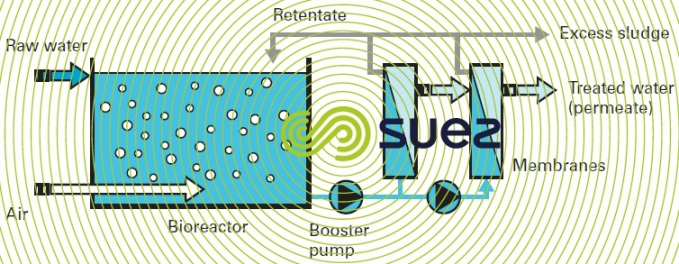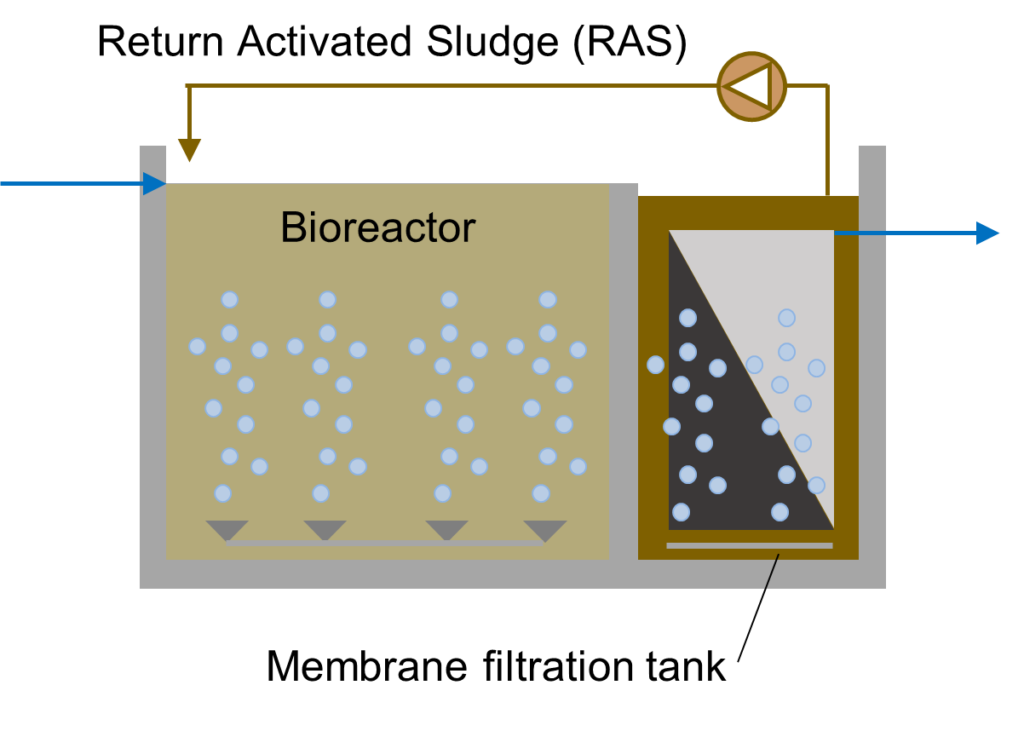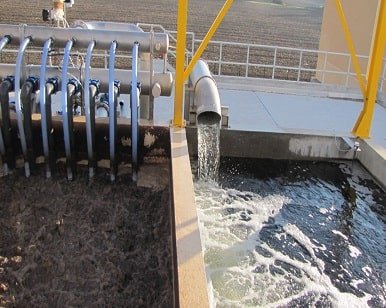Membrane Layer Bioreactors Clarified: Efficient Solutions for Clean Water
Membrane layer bioreactors (MBRs) have actually emerged as an innovative service for addressing journalism challenges of wastewater treatment. By incorporating organic procedures with advanced membrane purification, MBRs not just improve the quality of cured water yet also reduce the spatial needs of therapy facilities. As environmental problems intensify, the function of MBR innovation in promoting lasting water administration becomes increasingly substantial. However, the intricacies of their procedure, advantages, and prospective applications merit a closer assessment to fully understand their effect on the future of water therapy.

What Are Membrane Bioreactors?
Membrane bioreactors (MBRs) are sophisticated wastewater therapy systems that incorporate organic deterioration procedures with membrane layer filtration technology. This combination enables the effective removal of contaminants from water, making MBRs a recommended option in different applications, consisting of local wastewater treatment and industrial effluent monitoring.

Among the vital advantages of MBRs is their capability to generate premium effluent, frequently ideal for reuse in watering or industrial procedures. Additionally, MBRs need a smaller sized footprint compared to standard therapy systems, making them suitable for urban settings where area may be restricted.
Moreover, MBRs can efficiently handle varying influent tons and are less vulnerable to the results of poisonous shocks. These qualities add to their growing popularity as a sustainable option for dealing with the boosting demand for clean water while decreasing ecological influences.
Just How Membrane Bioreactors Work
While the operation of membrane bioreactors (MBRs) might seem complex, it fundamentally focuses on the synergy between biological processes and membrane filtering. MBRs integrate an organic treatment process, usually turned on sludge, with a membrane separation unit to treat wastewater efficiently.
In an MBR system, wastewater is very first presented right into a bioreactor where microbes degrade natural issue and other contaminants. The organic task reduces the concentration of contaminants while advertising the development of biomass. Following this biological treatment, the blended liquor undergoes membrane filtering, which can be microfiltration or ultrafiltration, depending upon the desired effluent top quality.
The membrane layers act as a physical obstacle, allowing water and small solutes to pass while retaining put on hold solids and bigger particles. This allows the system to maintain a high focus of biomass within the reactor, enhancing the therapy effectiveness.
In addition, the continual splitting up of cured water from the biomass assists in a portable layout and lessens the footprint of the treatment center. On the whole, the combination of organic deterioration and membrane layer filtration in MBRs causes reputable and reliable wastewater treatment, ensuring high-quality effluent appropriate for numerous applications.
Benefits of MBR Technology
Among the vital advantages of membrane layer bioreactor (MBR) innovation is its capability to create high-quality effluent with a substantially reduced footprint compared to traditional wastewater therapy approaches. MBR systems successfully combine biological treatment and membrane layer filtering, causing premium elimination of impurities, consisting of put on hold solids, virus, and raw material. This capacity brings about effluent that often fulfills or exceeds stringent regulatory criteria for reuse and discharge.
Additionally, MBR modern technology permits higher biomass concentrations, which improves the treatment efficiency and minimizes the needed activator quantity. This portable layout is especially helpful in city locations where area is limited. The operational flexibility of MBR systems also means they can adjust to differing influent high qualities and flow rates, making them ideal for a large range of applications.
Additionally, the decreased sludge manufacturing related to MBR processes adds to reduce operational and maintenance prices. The membrane layers work as a physical barrier, minimizing the threat of blocking and allowing longer operational durations between cleansing. Generally, the advantages of MBR technology make it an eye-catching service for lasting wastewater treatment, attending to both environmental problems and the requirement for efficient source monitoring.
Applications of Membrane Bioreactors
With their adaptability and effectiveness, membrane bioreactors (MBRs) discover applications throughout numerous sectors, consisting of municipal wastewater therapy, commercial processes, and even water recovery. In municipal setups, MBRs provide a small service for dealing with wastewater, properly eliminating contaminants while concurrently generating high-quality effluent that fulfills stringent regulative requirements. This makes them specifically ideal for areas with minimal space.
In industrial applications, MBR modern technology is utilized for treating process water, specifically in markets such as food and drink, pharmaceuticals, and petrochemicals. These industries gain from MBRs' capability to take care of high natural lots and their efficiency in recouping beneficial resources from wastewater, such as nutrients and water.
Additionally, MBRs play an essential function in water improvement initiatives, allowing the reuse of dealt with wastewater for irrigation, industrial procedures, or perhaps as potable water after further therapy (Membrane Bioreactor). Their efficiency in removing contaminants and virus makes them a dependable option for guaranteeing water quality in various reuse applications
Future of Water Treatment Solutions
The future of water therapy solutions is poised for transformative developments driven by technological innovation and boosting ecological understanding. As global water shortage comes to be try this web-site a pressing issue, brand-new methods, including membrane bioreactor (MBR) systems, are readied to play a crucial function in helpful resources enhancing the efficiency and sustainability of water treatment processes.
Arising innovations such as synthetic intelligence and artificial intelligence are expected to enhance treatment operations, enabling real-time surveillance and predictive maintenance. This will boost the overall dependability and efficiency of water therapy facilities. Innovations in membrane materials, such as graphene and nanofiltration, assure to increase permeation prices and minimize fouling, leading to reduced energy intake and operational expenses.
In addition, the integration of eco-friendly energy resources into water treatment plants will certainly contribute to greener methods. The round economic climate model will also gain traction, motivating the recovery of valuable resources from wastewater, such as nutrients and energy.
Final Thought

Membrane layer bioreactors (MBRs) have emerged as a sophisticated option for dealing with the pushing obstacles of wastewater treatment. By incorporating organic procedures with advanced membrane layer filtering, MBRs not only boost the quality of treated water but likewise minimize the spatial demands of treatment facilities.One of the key advantages of membrane layer bioreactor (MBR) innovation is its ability to create top notch effluent with a substantially minimized footprint compared to standard wastewater therapy approaches.With their convenience and efficiency, membrane bioreactors (MBRs) find applications across numerous fields, including local wastewater therapy, commercial processes, and even water improvement.In final thought, membrane bioreactors represent a considerable advancement in wastewater therapy modern technology, integrating biological processes with effective membrane purification to create high-quality effluent.